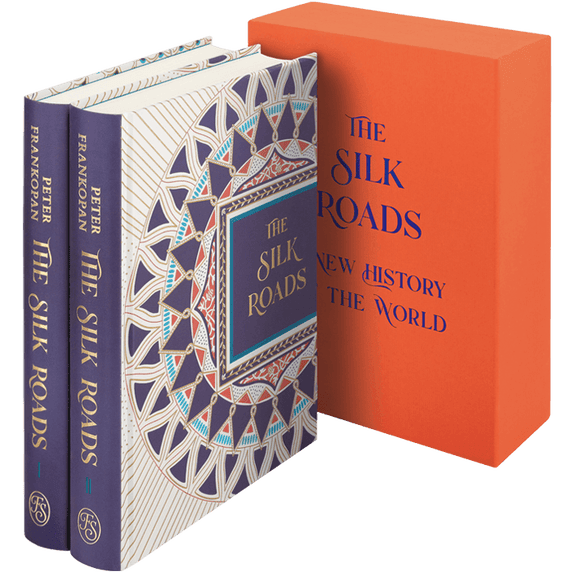
The Silk Roads
The Silk Roads is Peter Frankopan’s revolutionary world history told from the perspective of the East: a beautiful, illustrated Folio edition of an international bestseller.
Culture and Society in Italy
Introduced by the author
From patronage to postcode – Peter Burke reveals how social history shaped Renaissance art in our exquisite edition illustrated with examples of the period’s great works.
Every society erects obstacles to the expression of the creativity of some groups, and Renaissance Italy was no exception.
From Raphael to Machiavelli, the artists and writers of the Italian Renaissance have bequeathed the world an incredible cultural legacy. But would they have produced the same work and enjoyed the same accolades if born in another century, another country or to different families? It is this relationship between culture and society that forms the basis of Peter Burke’s fascinating and widely acclaimed work: a social history of the Renaissance that is broad in scope, eloquently explained and richly illustrated with artistic examples across art, sculpture and architecture.
Bound in cloth printed with detail from Raphael’s Saint Catherine of Alexandria
Set in Jenson
376 pages
32 pages of colour plates and 11 integrated black & white illustrations
Blocked slipcase
9˝ x 6¾˝
While art will always be critiqued within its cultural context, the period of 1400–1550 in Italy provided some specific circumstances that led to a proliferation of artists and art that remain among the most highly regarded in recorded history. Burke highlights the emergence of Italy’s city-states and the polarisation of its rural populations among the factors that influenced the Renaissance. Apprenticeships, patronage and a healthy market for painting and sculpture in cities such as Florence, Venice and Rome meant that talent would more likely be nurtured in urban centres. However, a city postcode and natural ability didn’t necessarily mean a career in the arts. If Raphael had been the son of a nobleman, rather than a painter, it is unlikely he would have turned his talent into more than a hobby. Likewise, if he had been born a woman, any artistic ambitions would have been quelled early on.
Neither artists or patrons were completely free to make aesthetic choices. Their liberty was limited, whether they realized this or not, by the need to take into account the standards of tastes of the period.
The narrative is engrossing and the art takes on fresh meaning when viewed against the backdrop of market forces, religion and the power of the patron; this last having an overriding influence on the style and subject matter of much art produced during the Renaissance. The great Botticelli was a servant to his patron’s whims, while Da Vinci’s Virgin of the Rocks was created to the specifications of his patron Ludovico Sforza and came with a ten-year guarantee.
Based on the latest revised and updated edition, Burke’s new introduction puts the research and conclusions that follow in context and sets the scene for a wide-reaching readership across the social history and arts disciplines. This stunning edition is bound in cloth and printed with a detail from Raphael’s Saint Catherine of Alexandria. There are 32 full-colour images beautifully reproduced for our edition, including works by Cellini, Titian, Raphael, Botticelli and Da Vinci. These are printed on specially coated Arctic Volume paper to best replicate the painting-like qualities of the images.
Eleven black-and-white woodcuts and illustrations provide visual reference points for Burke’s discourse and include churches, academy interiors and frescoes from the period.
Peter Burke is a cultural historian and historian of Europe. He is currently Emeritus Professor of Cultural History at the University of Cambridge. He has published 33 books, including The Italian Renaissance (1972), Popular Culture in Early Modern Europe (1978), The Fabrication of Louis XIV (1992), The Art of Conversation(1993), A Social History of Knowledge (2000), Eyewitnessing (2000), What is Cultural History? (2004) and Languages and Communities in Early Modern Europe (2004). His work has been translated into 34 languages.
